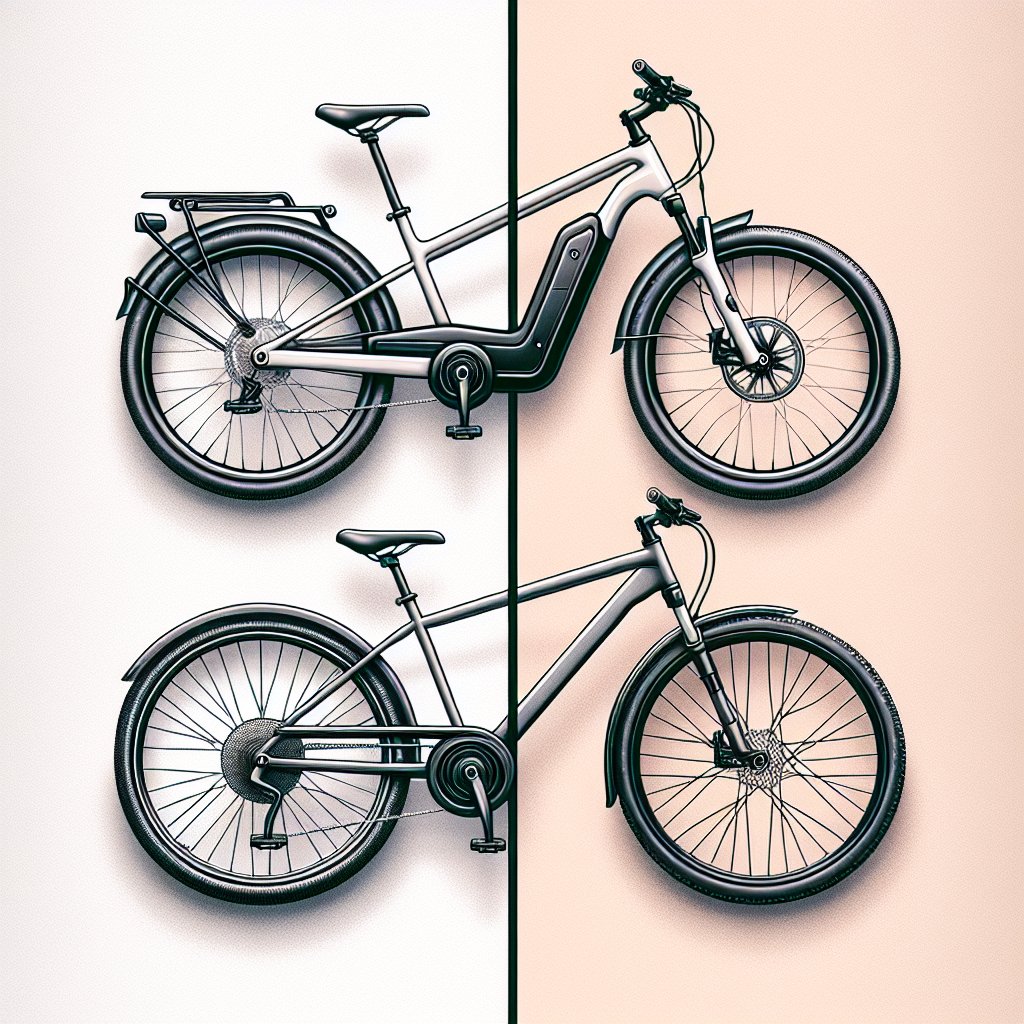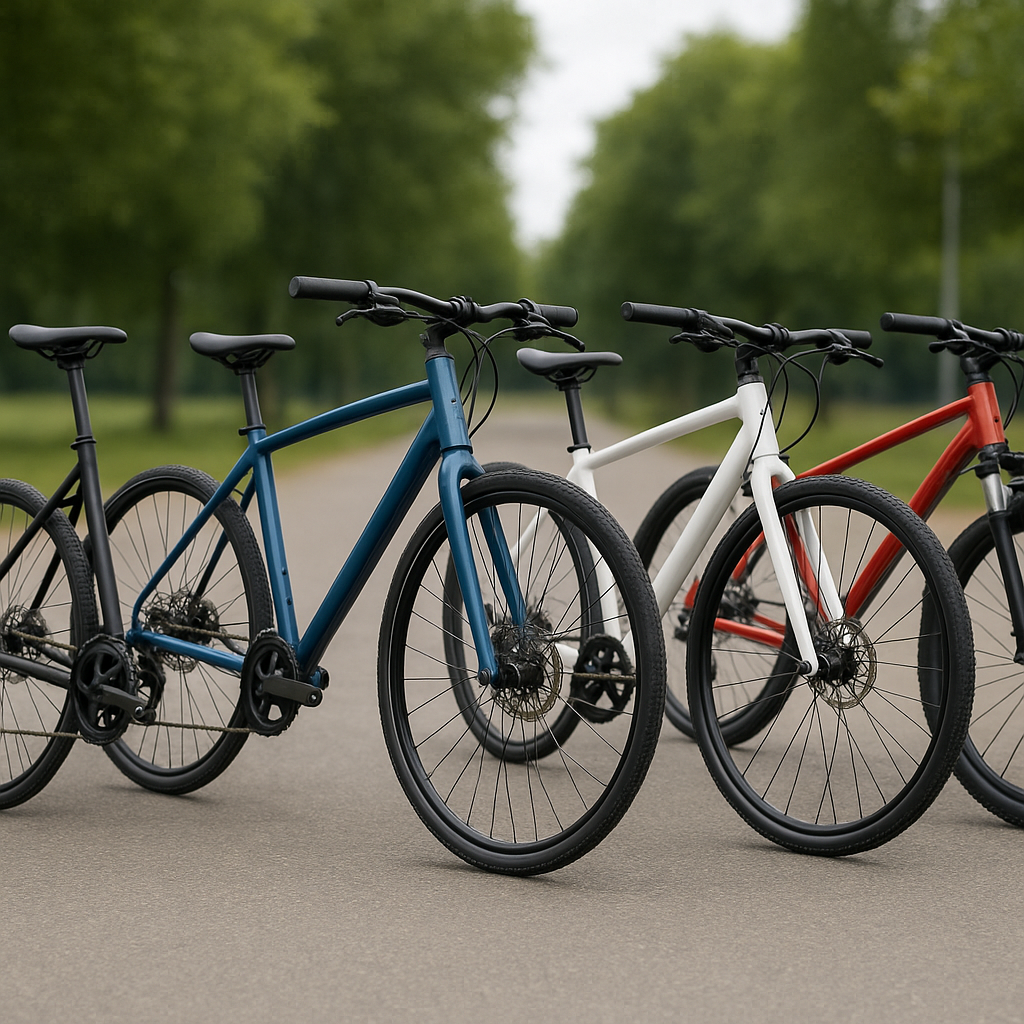Choosing between an e-bike and a traditional bike can be a challenging decision for many cycling enthusiasts. Both options offer unique benefits and cater to different needs and preferences. In this article, we will explore the key differences, advantages, and disadvantages of e-bikes and traditional bikes to help you make an informed decision.
Understanding E-Bikes
E-bikes, or electric bicycles, have gained significant popularity in recent years. They are equipped with an electric motor that assists the rider’s pedaling, making it easier to tackle hills and long distances. E-bikes come in various styles, including city bikes, mountain bikes, and folding bikes, each designed to cater to specific riding conditions and preferences.
Advantages of E-Bikes
- Ease of Use: The electric motor provides assistance, making it easier for riders to cover longer distances and climb steep hills without excessive effort.
- Speed: E-bikes can reach higher speeds compared to traditional bikes, making them a convenient option for commuting and reducing travel time.
- Accessibility: E-bikes are an excellent choice for individuals with physical limitations or those who are new to cycling, as they require less physical exertion.
- Environmental Benefits: E-bikes produce zero emissions, making them an eco-friendly alternative to cars and motorcycles for short-distance travel.
Disadvantages of E-Bikes
- Cost: E-bikes are generally more expensive than traditional bikes due to the added technology and components.
- Weight: The electric motor and battery add extra weight to the bike, making it heavier and potentially more challenging to transport or store.
- Maintenance: E-bikes require more maintenance and specialized knowledge to repair, particularly concerning the electrical components.
- Battery Life: The battery life of an e-bike can be a limiting factor, requiring regular charging and potentially running out of power during long rides.
Exploring Traditional Bikes
Traditional bikes, also known as conventional or manual bikes, have been around for centuries and remain a popular choice for many cyclists. They rely solely on human power, with no electric assistance, and come in various types, including road bikes, mountain bikes, and hybrid bikes.
Advantages of Traditional Bikes
- Affordability: Traditional bikes are generally more affordable than e-bikes, making them accessible to a broader range of people.
- Lightweight: Without the added weight of a motor and battery, traditional bikes are lighter and easier to handle, transport, and store.
- Low Maintenance: Traditional bikes have fewer components that can malfunction, making them easier and cheaper to maintain and repair.
- Fitness Benefits: Riding a traditional bike provides a more intense workout, helping to improve cardiovascular health, build muscle, and burn calories.
Disadvantages of Traditional Bikes
- Physical Exertion: Traditional bikes require more physical effort, which can be challenging for individuals with limited fitness levels or physical limitations.
- Speed and Distance: Without electric assistance, traditional bikes may be slower and less suitable for long-distance commuting or travel.
- Terrain Limitations: Riding on hilly or uneven terrain can be more difficult and exhausting on a traditional bike compared to an e-bike.
Factors to Consider When Choosing Between E-Bikes and Traditional Bikes
When deciding between an e-bike and a traditional bike, several factors should be taken into account to ensure you choose the option that best suits your needs and preferences.
Purpose of Use
Consider the primary purpose of your bike. If you plan to use it for commuting, an e-bike may be more suitable due to its speed and ease of use. For recreational riding or fitness purposes, a traditional bike might be a better choice.
Budget
Your budget will play a significant role in your decision. E-bikes tend to be more expensive, so if cost is a concern, a traditional bike may be the more affordable option.
Fitness Level
Assess your fitness level and physical capabilities. If you prefer a more intense workout or have no physical limitations, a traditional bike can provide greater fitness benefits. Conversely, if you need assistance or have physical constraints, an e-bike can make cycling more accessible and enjoyable.
Distance and Terrain
Consider the typical distance and terrain you will be riding on. E-bikes are advantageous for long distances and hilly terrain, while traditional bikes are well-suited for shorter rides and flat surfaces.
Environmental Impact
Both e-bikes and traditional bikes are environmentally friendly compared to motor vehicles. However, traditional bikes have a slight edge as they do not require batteries, which have environmental implications related to production and disposal.
Conclusion
Ultimately, the choice between an e-bike and a traditional bike depends on your individual needs, preferences, and circumstances. E-bikes offer convenience, speed, and accessibility, making them ideal for commuting and individuals with physical limitations. Traditional bikes, on the other hand, are more affordable, lightweight, and provide greater fitness benefits, making them suitable for recreational riding and fitness enthusiasts.
By carefully considering the advantages and disadvantages of each option, as well as your specific requirements, you can make an informed decision that will enhance your cycling experience and meet your needs effectively.












